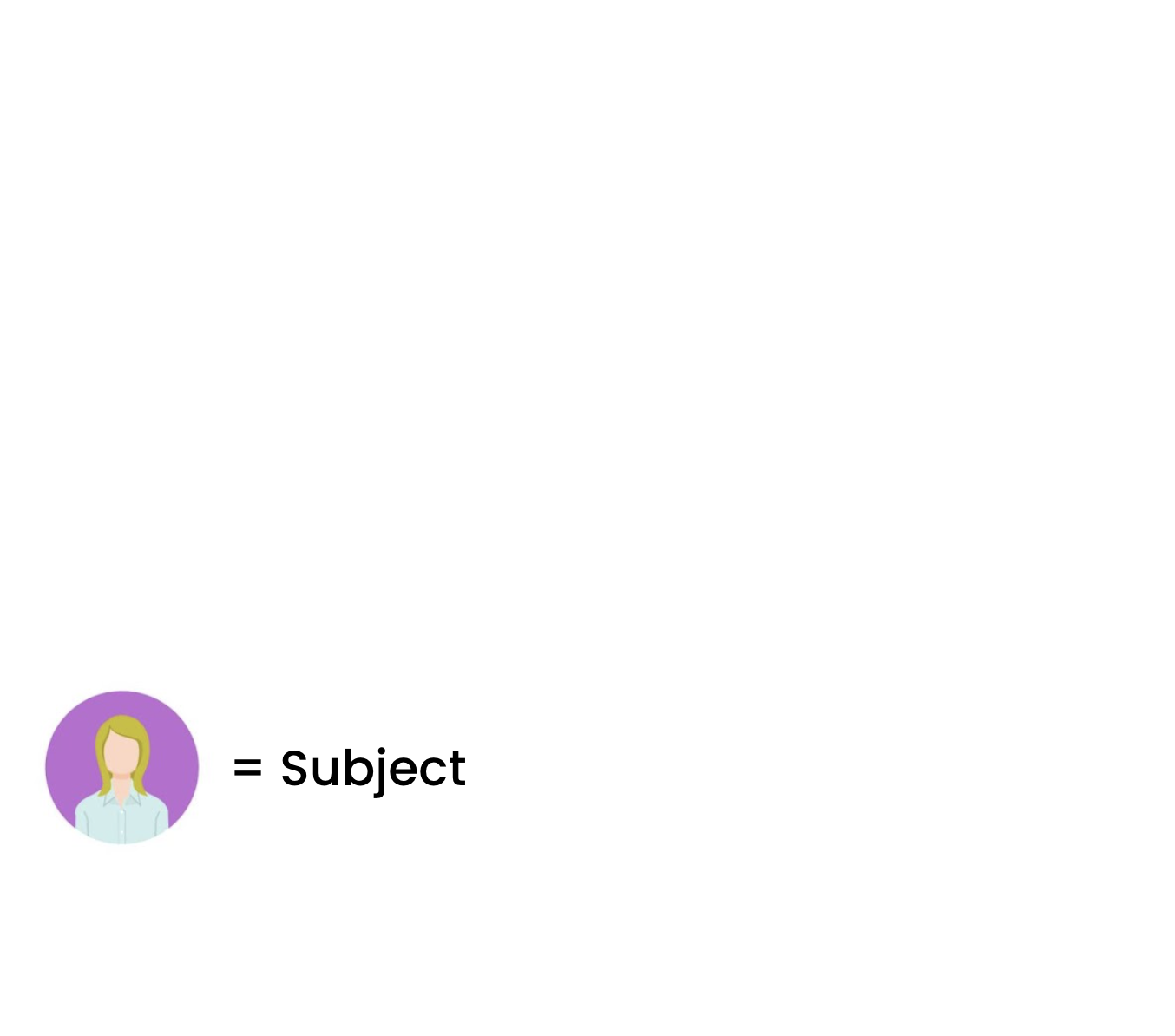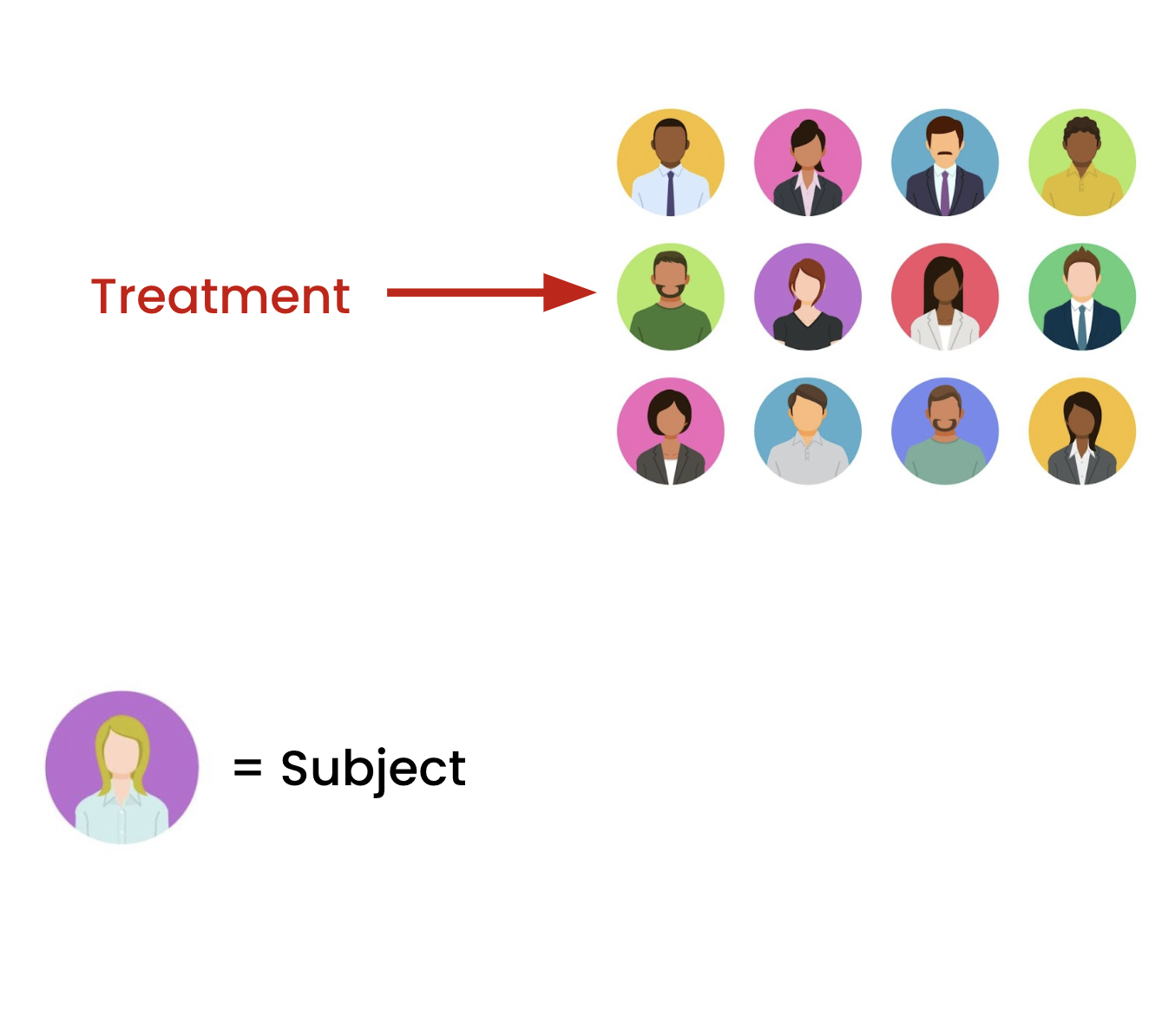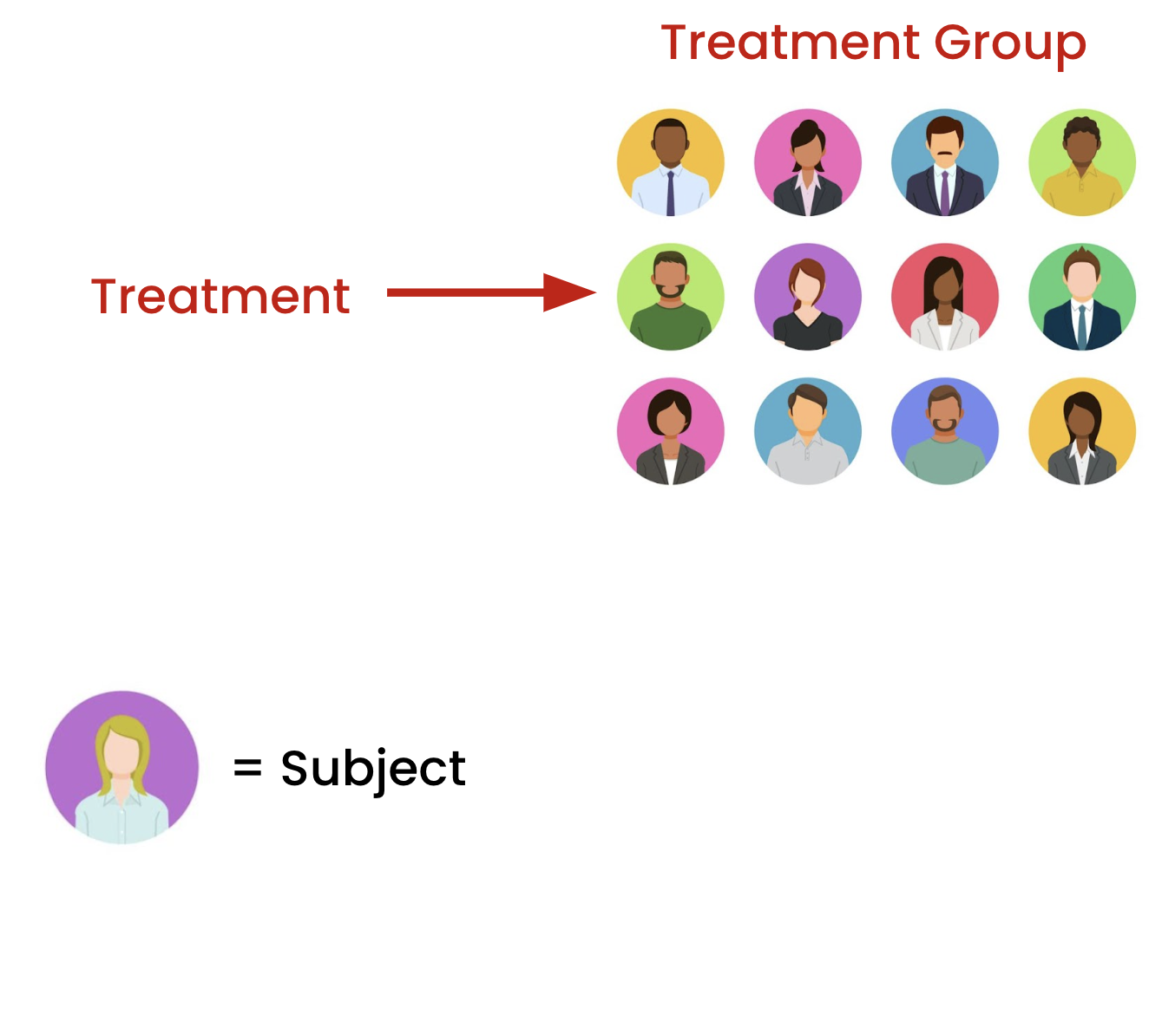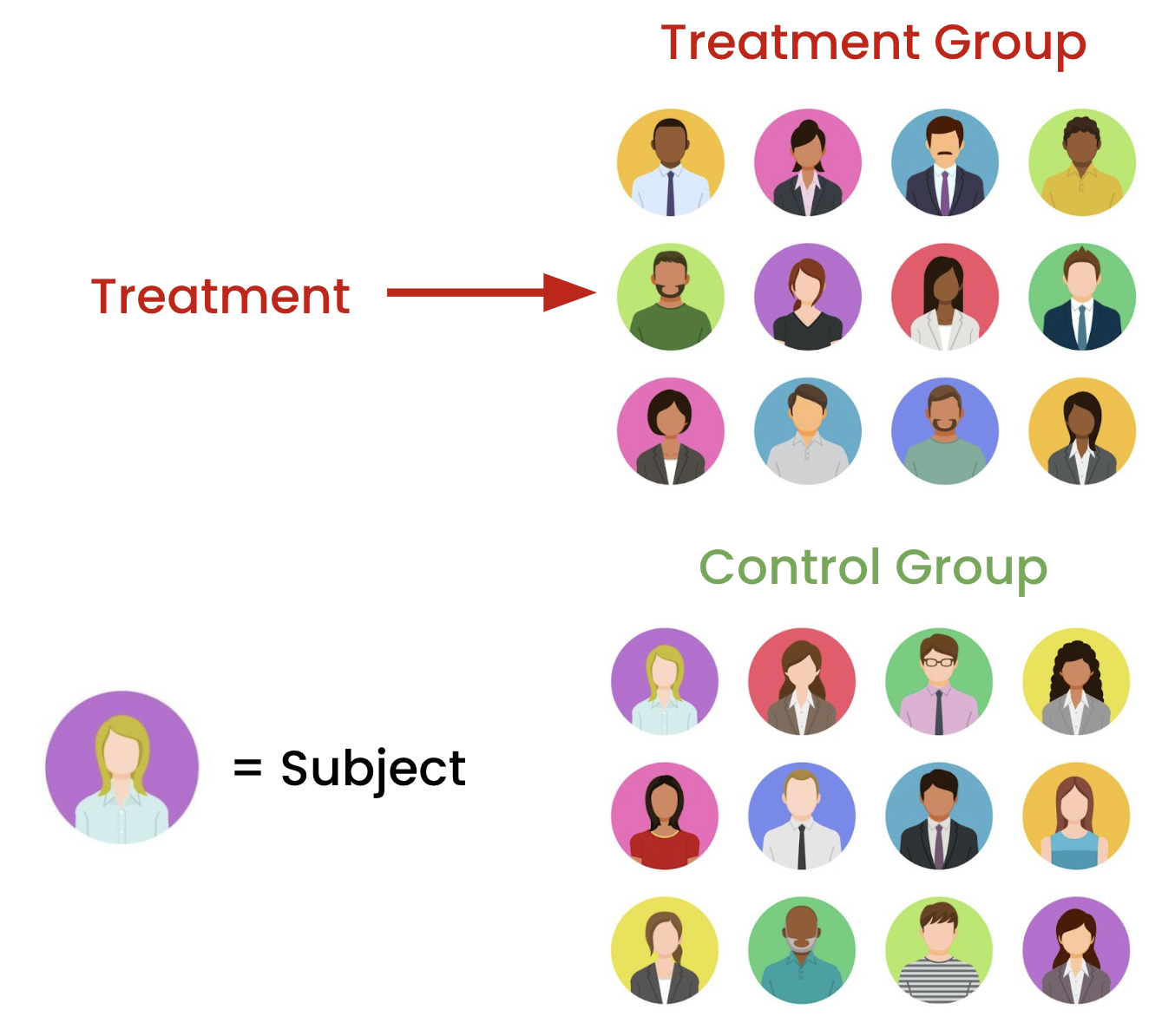Setting up experiments
Experimental Design in Python

James Chapman
Curriculum Manager, DataCamp
Experimental Design definition
- A process
- An objective and controlled way
- Draw specific conclusions
- In reference to a hypothesis

1 https://www.sciencedirect.com/topics/earth-and-planetary-sciences/experimental-design
Forming robust statements
X probably had an effect on Y. There is likely some small risk of error
- Precise and Quantified language
P-value analysis indicates X had an effect on Y with a 10% risk of Type I error
- Type I error: incorrectly reject null hypothesis
- Goal: Experimental design and statistical analysis
Why experimental design?
Useful in many fields:
- Medical research
- Marketing
- Product analytics
- Agriculture
- Government policy

Some terminology...
- Subjects = what we are experimenting on (people, employees, users, etc.)

Some terminology...
- Subjects = what we are experimenting on (people, employees, users, etc.)
- Treatment = some change given to one group

Some terminology...
- Subjects = what we are experimenting on (people, employees, users, etc.)
- Treatment = some change given to one group

Some terminology...
- Subjects = what we are experimenting on (people, employees, users, etc.)
- Treatment = some change given to one group
- Control = the group not given any change

Assigning subjects to groups
- How to assign subjects to groups?
- Option 1 - non-random ('split' the DataFrame)
- Option 2 - random assignment
- Example: 200 subjects heights in
heightsDataFrame
id height
0 0 177.98
1 1 174.17
2 2 178.89
Non-random assignment
Assignment by slicing the DataFrame
group1_nonrandom = heights.iloc[0:100,:] group2_nonrandom = heights.iloc[100:,:]compare_df = pd.concat( [group1_nonrandom['height'].describe(), group2_nonrandom['height'].describe()], axis=1) compare_df.columns = ['group1', 'group2'] print(compare_df)
- Very different! (Mean 9cm apart)
group1 group2
count 100.00 100.00
mean 170.32 179.19 <--
std 3.28 3.50
min 159.28 175.03
25% 168.06 176.57
50% 170.75 178.03
75% 173.09 180.79
max 174.92 191.32
Random assignment
- Use
.sample()norfrac(fraction 0-1)
group1 = heights.sample(frac=0.5, replace=False, random_state=42)group2 = heights.drop(group1.index)
print(compare_df)
- Much closer! (<1cm)
group1 group2
count 100.00 100.00
mean 175.10 174.41 <--
std 5.39 5.78
min 163.07 159.28
25% 171.32 170.17
50% 175.22 174.86
75% 178.32 177.85
max 189.78 191.32
Assignment summary
- Subjects should be randomly assigned to groups
- Observed changes correctly attributed
- Random subject assignment:
.sample() - Verify differences:
.describe()

Let's practice!
Experimental Design in Python

